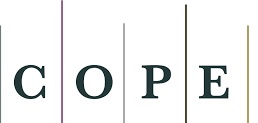Capital-based macroeconomics: his main contributions, extensions and developments
DOI:
https://doi.org/10.26867/se.2022.v11i2.137Keywords:
capital-based macroeconomics, austrian macroeconomics, austrian school of economicsAbstract
Research of Economic Theory, Macroeconomics and Political Economy focused on the Austrian macroeconomic approach whose main objective is to serve as a guide for future research that intends to use Garrison's diagrammatic framework in their studies. Attention is focused on the problem that the simplicity of Garrison's original model collected in his Time and Money: The Macroeconomics of Capital Structure (2001) poses when carrying out academic research on its basis. In this sense, the present paper focuses on collecting, explaining and expanding the different extensions and developments that various authors have been making to the model in the last two decades with the aim of presenting a more complete and better prepared model to deal with academic research in macroeconomics.
Downloads
Metrics
References
Alonso Neira MA (2004) La macroeconomía del capital en el siglo XXI. Análisis Económico, 19(40), 23-47.
Alonso Neira MA (2004) Una guía para el estudio de la Macroeconomía del Capital: ¿Existen razones para pensar que los ciclos recesivos responden a errores políticos y empresariales? Procesos de mercado: revista europea de economía política, 1, 113-186.
Bagus P (2012) Austrian business cycle theory: are 100 percent reserves sufficient to prevent a business cycle? Revista Procesos de Mercado, 9(1), 389-410.
Bellante D & Garrison RW (1988) Phillips curves and Hayekian triangles: two perspectives on monetary dynamics. History of Political Economy, 20(2), 207-234.
Böhm-Bawerk E (1998 [1890]) Teoría Positiva del Capital. Madrid: Ediciones Aosta.
Böhm-Bawerk E (2015 [1884]) Capital e interés: Historia y crítica de las teorías sobre el interés. Londres: Innisfree.
Butos WN (2001) Garrison and the “Keynes problem”. Quarterly Journal of Austrian Economics, 4(3), 5-16.
Cachanosky N (2014) Risk Structure of Production in Garrison's Model. Obtenido de SSRN: https://papers.ssrn.com/sol3/papers.cfm?abstract_id=2470109
Cachanosky N & Padilla A (2016) A Mathematical Version of Garrison's Model. Quarterly Journal of Austrian Economics, 19(3), 225-247.
Callahan G & Garrison RW (2003) Does Austrian business cycle theory help explain the dot-com boom and bust?. The Quarterly Journal of Austrian Economics, 6(2), 67-98.
Cochran JP (2001) Capital-based macroeconomics: recent developments and extensions of Austrian business cycle theory. Quarterly Journal of Austrian Economics, 4(3), 17-25.
Cowen T (1997) Risk and Business Cycles: New and Old Austrian Perspectives. New York : Routledge.
De Soto JH (2015 [1992]) Socialismo, Cálculo Económico y Función Empresarial. Madrid: Unión Editorial.
De Soto JH (2020 [1998]) Dinero, Crédito Bancario y Ciclos Económicos. Madrid: Unión Editorial.
De Sousa RD (2015) Descalce de plazos y reserva fraccionaria dentro de la Teoría Austriaca. . Obtenido de juandemariana.org: https://www.juandemariana.org/sites/default/files/investigacion/revista-viii-congreso-cea-2015.pdf#page=42
Ebeling R (2001) Austrian Macroeconomics: Review of Time and Money. Quarterly Journal of Austrian Macroeconomics, 4(3), 26-32.
Fernández IM (2016) Reserva fraccionaria y descalce de plazos. Un problema de grado no de clase. Obtenido de juandemariana.org: https://juandemariana.org/wp-content/uploads/2017/07/revista-ix-congreso-cea-2016.pdf#page=144
Garrison RW (1978) Austrian macroeconomics: A diagrammatical exposition. Menlo Park : Institute for Humane Studies .
Garrison RW (1989) The Austrian theory of the business cycle in the light of modern macroeconomics. The Review of Austrian Economics, 3(1), 3-29.
Garrison RW (1990) Austrian capital theory: the early controversies. History of Political Economy, 22(S1), 133-154.
Garrison RW (2004) Overconsumption and forced saving in mises-hayek theory of the business cycle. History of Political Economy, 36(2), 323-349.
Garrison RW (2006) Natural and neutral rates of interest in theory and policy formulation. Quarterly Journal of Austrian Economics, 9(4), 57-68.
Garrison RW (2020 [2001]) Tiempo y Dinero: la Macroeconomía de la Estructura del Capital. Madrid: Unión Editorial.
Hayek FA (2017 [1929]) La teoría monetaría y el ciclo económico. Madrid: Unión Editorial.
Hayek FA (2017 [1931]) Precios y Producción. Madrid: Unión Editorial.
Hayek FA (2020 [1941]) La Teoría Pura del Capital. Madrid: Unión Editorial.
Holcombe RG (2001) The Two Contributions of Garrison’s Time and Money. Quarterly Journal of Austrian Economics, 4(3), 27-32.
Huerta de Soto J (1998) Dinero, Crédito Bancario y Ciclos Económicos. Madrid: Unión Editorial.
Hülsmann JG (2001) Garrisonian macroeconomics. Quarterly Journal of Austrian Economics, 4(3), 33-41.
Machlup F (1940 [1931]) The Stock Market, Credit and Capital Formation. London, Edinburgh and Glasgow: Willian Hodge and Company.
Miller RC (2012) Systemic appraisal optimism and Austrian business cycle theory. Quarterly Journal of Austrian Economics, 15(4), 432–442.
Mises L (2012 [1912]) La Teoría del dinero y del crédito. Madrid: Unión Editorial.
Mises L (2021 [1949]) La Acción Humana. Madrid: Unión Editorial.
Mishkin F (2001) The Economics of Money, Banking, and Financial Markets. Boston: Addison Wesley.
Rallo JR (2019) Una Crítica a la Teoría Monetaria de Mises: Un replanteamiento de la teoría del dinero y del crédito dentro de la Escuela Austriaca de Economía. Madrid: Unión Editorial.
Ravier AO (2011) Rethinking capital based macroeconomics. The Quarterly Journal of Austrian Economics. Quarterly Journal of Austrian Economics, 14(3), 347-375.
Ravier AO & Cachanosky N (2015) Fiscal Policy Capital Based Macroeconomics with Idle Resources. Journal of Private Enterprise, 30, 81-95.
Ritchie D (2005) eseade.edu.ar. Obtenido de Hacia una macroeconomía austriaca de una economía abierta: https://www.eseade.edu.ar/files/Libertas/3_5_Ritchie.pdf
Romer PM (1986) Increasing returns and long-run growth. Journal of political economy, 94(5), 1002-1037.
Sánchez-Bayón A (2020c) Una historia epistemológica de los estudios de ciencias jurídicas y económicas. Derecho y Cambio Social, 62: 468-498. URL: https://dialnet.unirioja.es/servlet/articulo?codigo=7626210.
Sánchez-Bayón A (2021b) Una historia de las ciencias económicas desde sus raíces y disciplinas duales: de la hacendística y camerología a la economía aplicada y su giro hermenéutico. Revista Facultad De Ciencias Económicas, 29(2), 87-103. DOI: https://doi.org/10.18359/rfce.5439.
Sánchez-Bayón A (2021c) Giro hermenéutico y revolución copernicana en Ciencias Económicas: Regreso a las raíces y disciplinas duales. Encuentros Multidisciplinares, 23(68): 1-26.
Sánchez-Bayón A (2022) ¿Crisis económica o economía en crisis? Relaciones ortodoxia-heterodoxia en la transición digital. Semestre Económico, 11(1): 54–73 doi:http://dx.doi.org/10.26867/se.2022.1.128.
Sánchez-Bayón A, Urbina DA & Castro-Oliva M (2022) Historia económica heterodoxa de la Escuela de Salamanca: padres de la Economía Política y Hacienda Pública y referentes de otras escuelas. Journal of the Sociology and Theory of Religion, 14(Extra-1), 65-102. DOI: https://doi.org/10.24197/jstr.Extra-1.2022.65-102.
Sánchez-Bayón A, Castro-Oliva M, Alonso Neira MA & Huerta de Soto J (2022) Comparative review of the cycle theory: bases for dialogue. Advance. Preprint. DOI: https://doi.org/10.31124/advance.21101992.
Salerno JT (2001) Does the concept of secular growth have a place in capital-based macroeconomics? Quarterly Journal of Austrian Economics, 4(3), 43-61.
Skousen M (1990) The Structure of Production. New York: New York University Press.
Skousen M (2001) The Making of Modern Economics. Armonk: M.E. Sharpe.
Solow RM (1956) A contribution to the theory of economic growth. The quarterly journal of economics, 70(1), 65-94.
Young AT (2009) A Capital-Based Theory of Economic Growth. Quarterly Journal of of Austrian Economics 12 (1), 36–51.
Young AT (2012) Austrian Business Cycle Theory: A Modern Appraisal. In P. J. Boettke & C. J. Coyne (Eds.), Oxford Handbook of Austrian Economics. Oxford: Oxford University Press.
Downloads
Published
How to Cite
Issue
Section
License
Copyright (c) 2022 Marcos Castro-Oliva

This work is licensed under a Creative Commons Attribution 4.0 International License.
















